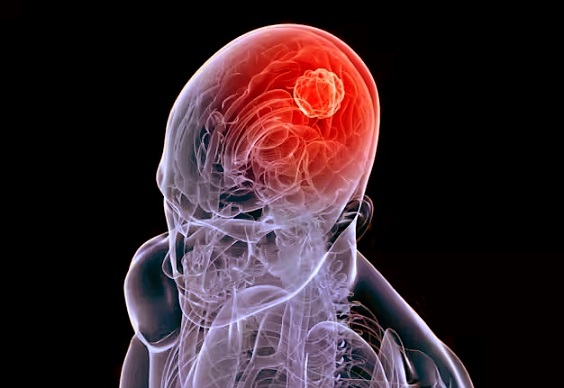Swiss Researchers Unveil New Insights into the Role of miRNAs in Glioblastoma Development and Treatment
Nikhil Prasad Fact checked by:Thailand Medical News Team Feb 05, 2025 9 months, 5 days, 37 minutes ago
Medical-News: Glioblastoma is one of the most aggressive brain tumors, with a survival rate that remains low despite advancements in research and treatment. Scientists and medical professionals have been working to uncover new ways to diagnose and treat this deadly disease. In recent years, a growing area of study has focused on microRNAs (miRNAs), tiny molecules that play a significant role in gene regulation and cancer development. Researchers from the Institute of Pathology, Ente Ospedaliero Cantonale (EOC) in Switzerland and the Service of Neurosurgery, Neurocenter of Southern Switzerland have conducted an extensive study to understand how miRNAs influence glioblastoma progression and patient outcomes.
 New Insights into the Role of miRNAs in Glioblastoma Development and Treatment
The Role of miRNAs in Brain Cancer
New Insights into the Role of miRNAs in Glioblastoma Development and Treatment
The Role of miRNAs in Brain Cancer
This
Medical News report delves into the findings of this groundbreaking study, which highlights the potential of miRNAs in glioblastoma diagnosis, prognosis, and treatment. miRNAs are small RNA molecules that help regulate gene expression, essentially turning genes on or off. Scientists have discovered that in glioblastoma, certain miRNAs are overactive, contributing to tumor growth, while others are suppressed, preventing the body from naturally stopping the tumor’s progression. This imbalance can drive the aggressive nature of glioblastoma, making it challenging to treat with conventional methods.
Key Findings from the Study
The research identified several specific miRNAs that play crucial roles in glioblastoma:
-miR-10b and miR-10a: These molecules promote cancer cell proliferation and invasion by targeting genes that would otherwise prevent tumor growth. The study found that miR-10b is significantly more active in glioblastoma compared to other brain tumors, making it a potential biomarker for early detection.
-miR-148a: This miRNA influences cell adhesion and invasion. High levels of miR-148a were detected in glioblastoma patients, indicating its role in the tumor’s ability to spread.
-miR-26a: Researchers found that miR-26a is linked to increased resistance to radiation therapy. This means that patients with high levels of this miRNA may not respond well to standard treatments, making it an important factor to consider when designing personalized treatment plans.
-miR-137: This miRNA was found to suppress tumor growth. However, in glioblastoma patients, its levels were unusually low, suggesting that increasing miR-137 expression could potentially slow down cancer progression.
-miR-181 family: These miRNAs play a dual role, with some members acting as tumor suppressors and others contributing to cancer progression. The study highlights their potential in guiding treatment decisions based on individual patient profiles.
gt;How These Findings Impact Future Treatments
Understanding the role of miRNAs in glioblastoma opens the door to new treatment strategies. One promising approach is the development of miRNA-based therapies, where synthetic miRNAs could be used to restore balance in gene regulation. For instance, suppressing harmful miRNAs like miR-10b or miR-26a could help slow tumor growth, while increasing beneficial miRNAs like miR-137 could enhance the body’s ability to fight the disease.
Additionally, miRNAs could serve as powerful diagnostic tools. Since they can be detected in blood samples, doctors may soon be able to use miRNA testing for early detection of glioblastoma, making it possible to start treatment at an earlier stage when the tumor is more manageable.
The Study’s Conclusions
The findings of this study emphasize the critical role that miRNAs play in glioblastoma development and treatment. By identifying which miRNAs contribute to tumor growth and resistance to therapy, researchers have taken a significant step toward more personalized and effective treatments. This knowledge could lead to the development of new drugs targeting specific miRNAs, offering hope for improved survival rates and better quality of life for glioblastoma patients. While more research is needed to translate these findings into clinical treatments, this study marks an important milestone in the fight against this aggressive cancer.
The study findings were published on a preprint server and are currently being peer reviewed.
https://www.preprints.org/manuscript/202502.0177/v1
For the latest on Glioblastoma, keep on logging to Thailand Medical News.
Read Also:
https://www.thailandmedical.news/news/malaysian-and-australian-oncologists-explore-abc-transporters-and-their-role-in-glioblastoma-drug-resistance
https://www.thailandmedical.news/news/doctors-warn-of-rising-cases-of-glioblastoma-multiforme-in-the-united-states
https://www.thailandmedical.news/news/exploring-natural-compounds-derived-from-peruvian-maca-lepidium-meyenii-to-tackle-glioblastoma-multiforme
https://www.thailandmedical.news/articles/cancer
